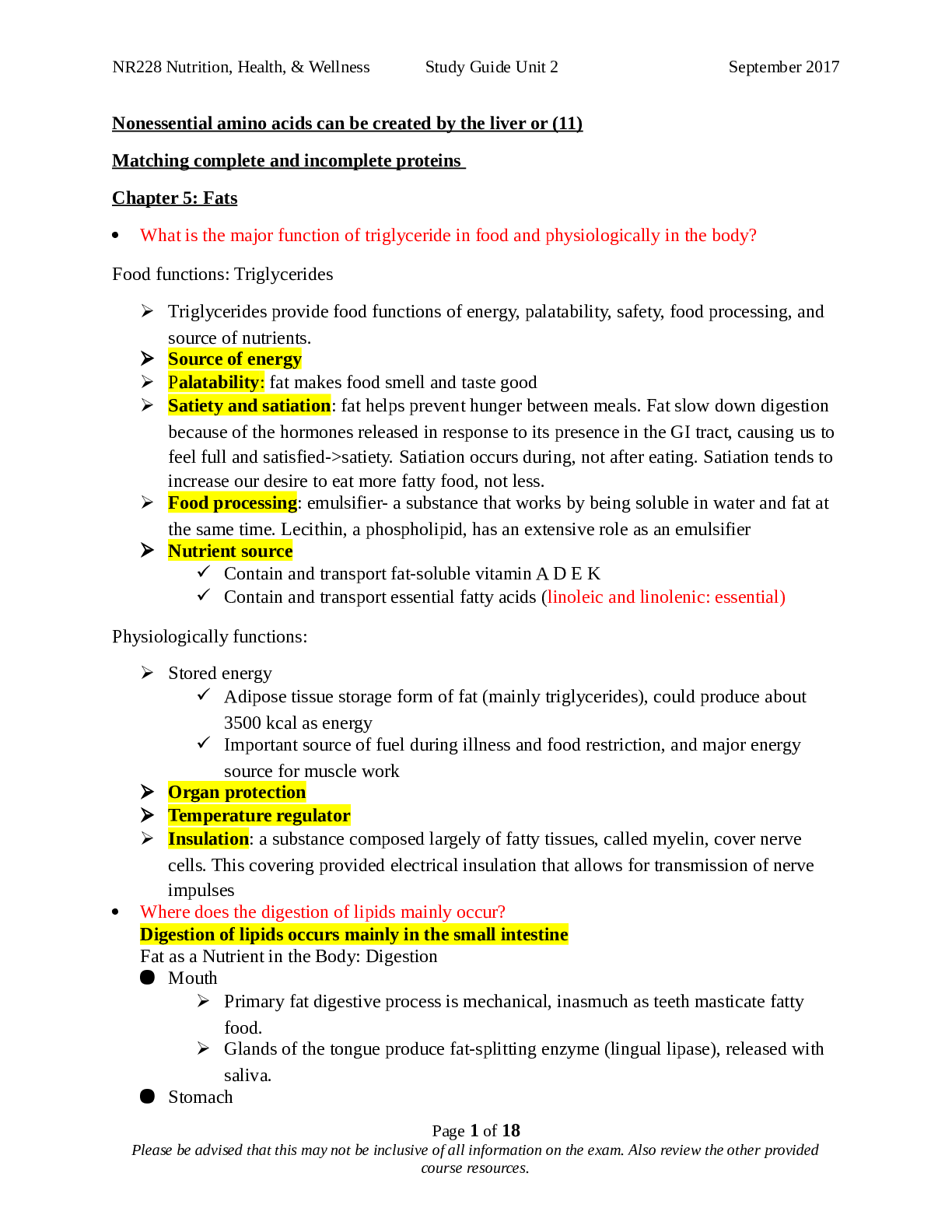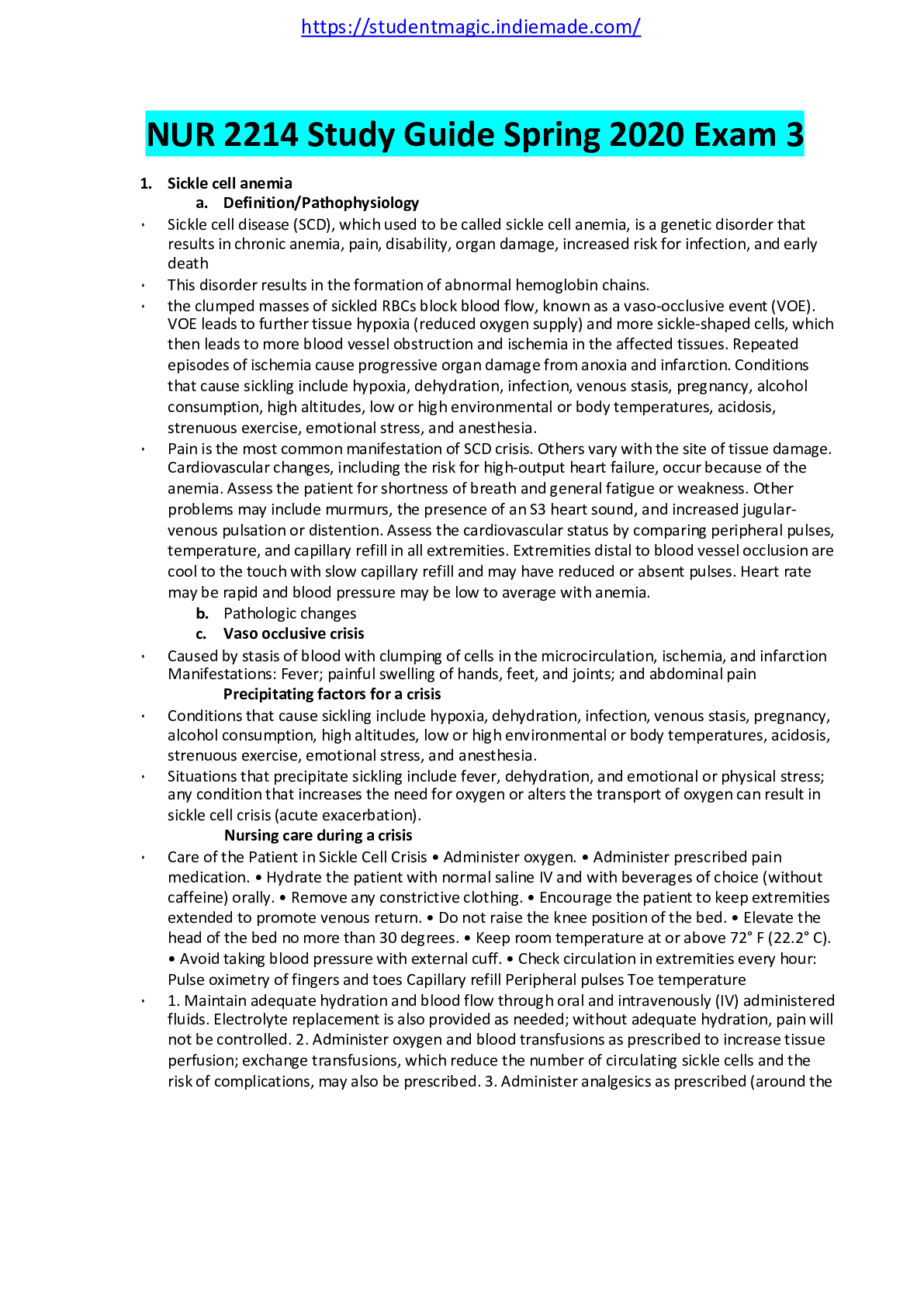English > STUDY GUIDE > Winners’ Guide to GMAT Grammar & Sentence Correction – 2007 Edition By www.my-gmat.com (All)
Winners’ Guide to GMAT Grammar & Sentence Correction – 2007 Edition By www.my-gmat.com
Document Content and Description Below
Winners’ Guide to GMAT Grammar & Sentence Correction – 2007 Edition By www.my-gmat.com All rights reserved. All contents of this eBook are copyrighted by www.mygmat.com. Reproducing any part o... f this document is prohibited without the express written consent of my-gmat.comWinners’ Guide to GMAT Grammar & SC The English Language: A brief background _________________________________ 4 Beginning—Different Sources—The Present______________________________ 4 Three Essentials of Good Writing _______________________________________ 5 Divisions of Grammar ________________________________________________ 6 The English Language in a Nutshell _____________________________________ 6 The Sentence _______________________________________________________ 27 Sentence Classification _______________________________________________ 34 Letters ____________________________________________________________ 36 Syllables and Words _________________________________________________ 36 Sentence Correction on the GMAT________________________________________ 37 Grammar Errors commonly Tested on the GMAT________________________ 38 Pronoun errors _____________________________________________________ 38 Subject-verb errors__________________________________________________ 39 Here are the important subject-verb agreement rules. _____________________ 40 Misplaced modifier Errors____________________________________________ 45 Tenses_____________________________________________________________ 51 Comparative Pitfalls to avoid on the GMAT _____________________________ 52 What the GMAT SC Section Does NOT TEST ___________________________ 54 Sentence Correction Pitfalls to Avoid ______________________________________ 55 THAT FOR SO _____________________________________________________ 55 THESE—THOSE ___________________________________________________ 55 THIS MUCH—THUS MUCH_________________________________________ 55 FLEE—FLY _______________________________________________________ 55 THROUGH—THROUGHOUT _______________________________________ 55 VOCATION AND AVOCATION______________________________________ 56 WAS—WERE ______________________________________________________ 56 The Website for GMAT Winners: www.my-gmat.comWinners’ Guide to GMAT Grammar & SC A OR AN __________________________________________________________ 56 ATTRACTION _____________________________________________________ 56 THE SPLIT INFINITIVE ____________________________________________ 57 ONE ______________________________________________________________ 58 ONLY_____________________________________________________________ 58 ALONE ___________________________________________________________ 59 OTHER AND ANOTHER ____________________________________________ 59 AND WITH THE RELATIVE ________________________________________ 59 LOOSE PARTICIPLES______________________________________________ 59 BROKEN CONSTRUCTION _________________________________________ 60 DOUBLE NEGATIVE _______________________________________________ 61 FIRST PERSONAL PRONOUN_______________________________________ 61 SEQUENCE OF TENSES ____________________________________________ 61 BETWEEN—AMONG_______________________________________________ 62 LESS—FEWER ____________________________________________________ 63 FURTHER—FARTHER _____________________________________________ 63 EACH OTHER—ONE ANOTHER ____________________________________ 63 EACH, EVERY, EITHER, NEITHER__________________________________ 63 NEITHER-NOR ____________________________________________________ 64 NONE_____________________________________________________________ 64 RISE-RAISE _______________________________________________________ 64 LAY-LIE __________________________________________________________ 65 SAYS I—I SAID ____________________________________________________ 65 IN—INTO _________________________________________________________ 65 EAT—ATE ________________________________________________________ 66 SEQUENCE OF PERSON____________________________________________ 66 AM COME—HAVE COME __________________________________________ 66 PAST TENSE—PAST PARTICIPLE __________________________________ 66 PREPOSITIONS AND THE OBJECTIVE CASE ________________________ 67 SUMMON—SUMMONS_____________________________________________ 68 UNDENIABLE—UNEXCEPTIONABLE _______________________________ 68 Superfluous Words_____________________________________________________ 68 GMAT IDIOM Pitfalls that Winners avoid _________________________________ 70 The Website for GMAT Winners: www.my-gmat.comWinners’ Guide to GMAT Grammar & SC A Comprehensive List of GMAT Idioms ________________________________ 74 Sentence Correction Practice ____________________________________________ 89 ANSWERS_________________________________________________________ 93 Further Practice_______________________________________________________ 96 Answers to Further Practice Questions ________________________________ 102 Exercise –3 __________________________________________________________ 103 Exercise-3 Answers ___________________________________________________ 118 Exercise-4___________________________________________________________ 123 Exercise –4 Answers __________________________________________________ 135 The English Language: A brief background Beginning—Different Sources—The Present The English language is the tongue now current in England and her colonies throughout the world and also throughout the greater part of the United States of America. It sprang from the German tongue spoken by the Teutons, who came over to Britain after the conquest of that country by the Romans. These Teutons comprised Angles, Saxons, Jutes The Website for GMAT Winners: www.my-gmat.comWinners’ Guide to GMAT Grammar & SC and several other tribes from the northern part of Germany. They spoke different dialects, but these became blended in the new country, and the composite tongue came to be known as the Anglo-Saxon which has been the main basis for the language as at present constituted and is still the prevailing element. The Anglo-Saxon element supplies the essential parts of speech, the article, pronoun of all kinds, the preposition, the auxiliary verbs, the conjunctions, and the little particles which bind words into sentences and form the joints, sinews and ligaments of the language. It furnishes the most indispensable words of the vocabulary. Three Essentials of Good Writing The three essentials of the English language are: Purity, Perspicuity and Precision. By Purity is signified the use of good English. It precludes the use of all slang words, vulgar phrases, obsolete terms, foreign idioms, ambiguous expressions or any ungrammatical language whatsoever. Neither does it sanction the use of any newly coined word until such word is adopted by the best writers and speakers. Perspicuity demands the clearest expression of thought conveyed in unequivocal language, so that there may be no misunderstanding whatever of the thought or idea the speaker or writer wishes to convey. All ambiguous words, words of double meaning and words that might possibly be construed in a sense different from that intended, are strictly forbidden. Perspicuity requires a style at once clear and comprehensive and entirely free from pomp and pedantry and affectation or any straining after effect. Precision requires concise and exact expression, free from redundancy and tautology, a style terse and clear and simple enough to enable the hearer or reader to comprehend immediately the meaning of the speaker or writer. It forbids, on the one hand, all long and involved sentences, and, on the other, those that are too short and abrupt. Its object is The Website for GMAT Winners: www.my-gmat.comWinners’ Guide to GMAT Grammar & SC to strike the golden mean in such a way as to rivet the attention of the hearer or reader on the words uttered or written. Divisions of Grammar There are four great divisions of Grammar, viz.: Orthography, Etymology, Syntax, and Prosody. Orthography treats of letters and the mode of combining them into words. Etymology treats of the various classes of words and the changes they undergo. Syntax treats of the connection and arrangement of words in sentences. Prosody treats of the manner of speaking and reading and the different kinds of verse. The three first mentioned concern us most. The English Language in a Nutshell All the words in the English language are divided into nine great classes. These classes are called the Parts of Speech. They are Article, Noun, Adjective, Pronoun, Verb, Adverb, Preposition, Conjunction and Interjection. Of these, the Noun is the most important, as all the others are more or less dependent upon it. A Noun signifies the name of any person, place or thing, in fact, anything of which we can have either thought or idea. There are two kinds of Nouns, Proper and Common. Common Nouns are names which belong in common to a race or class, as man, city. Proper Nouns distinguish individual members of a race or class as John, Philadelphia. In the former case, man is a name which belongs in common to the whole race of mankind, and city is also a name which is common to all large centres of population, but John signifies a particular individual of the race, while Philadelphia denotes a particular one from among the cities of the world. Nouns are varied by Person, Number, Gender, and Case. Person is that relation existing between the speaker, those addressed and the subject under consideration, whether by The Website for GMAT Winners: www.my-gmat.comWinners’ Guide to GMAT Grammar & SC discourse or correspondence. The Persons are First, Second and Third and they represent respectively the speaker, the person addressed and the person or thing mentioned or under consideration. Number is the distinction of one from more than one. There are two numbers, singular and plural; the singular denotes one, the plural two or more. The plural is generally formed from the singular by the addition of ‘s’ or ‘ es’. Gender has the same relation to nouns that sex has to individuals, but while there are only two sexes, there are four genders, viz., masculine, feminine, neuter and common. The masculine gender denotes all those of the male kind, the feminine gender all those of the female kind, the neuter gender denotes inanimate things or whatever is without life, and common gender is applied to animate beings, the sex of which for the time being is indeterminable, such as fish, mouse, bird, etc. Sometimes things which are without life as we conceive it and which, properly speaking, belong to the neuter gender, are, by a figure of speech called Personification, changed into either the masculine or feminine gender, as, for instance, we say of the sun, He is rising; of the moon, She is setting. Case is the relation one noun bears to another or to a verb or to a preposition. There are three cases, the Nominative, the Possessive and the Objective. The nominative is the subject of which we are speaking or the agent which directs the action of the verb; the possessive case denotes possession, while the objective indicates the person or thing which is affected by the action of the verb. An Adjective is a word, which qualifies a noun, that is, which shows some distinguishing mark or characteristic belonging to the noun. A Pronoun is a word used for or instead of a noun to keep us from repeating the same noun too often. Pronouns, like nouns, have case, number, gender and person. There are three kinds of pronouns, personal, relative and adjective. A verb is a word, which signifies action or the doing of something. A verb is inflected by tense and mood and by number and person, though the latter two belong strictly to the subject of the verb. The Website for GMAT Winners: www.my-gmat.comWinners’ Guide to GMAT Grammar & SC An adverb is a word, which modifies a verb, an adjective and sometimes another adverb. A preposition serves to connect words and to show the relation between the objects, which the words express. A conjunction is a word, which joins words, phrases, clauses and sentences together. An interjection is a word, which expresses surprise or some sudden emotion of the mind. A more detailed definition of the important parts of speech follows. Article An Article is a word placed before a noun to show whether the noun is used in a particular or general sense. There are two articles, a or an and the. A or an is called the indefinite article because it does not point put any particular person or thing but indicates the noun in its widest sense; thus, a man means any man whatsoever of the species or race. The is called the definite article because it points out some particular person or thing; thus, the man means some particular individual. Noun A noun is the name of any person, place or thing as John, London, and book. Nouns are proper and common. Proper nouns are names applied to particular persons or places. Common nouns are names applied to a whole kind or species. Nouns are inflected by number, gender and case. Number is that inflection of the noun by which we indicate whether it represents one or more than one. Gender is that inflection by which we signify whether the noun is the name of a male, a female, of an inanimate object or something, which has no distinction of sex. The Website for GMAT Winners: www.my-gmat.comWinners’ Guide to GMAT Grammar & SC Case is that inflection of the noun, which denotes the state of the person, place or thing, represented, as the subject of an affirmation or question, the owner or possessor of something mentioned, or the object of an action or of a relation. Thus in the example, “John tore the leaves of Sarah’s book,” the distinction between book which represents only one object and leaves which represent two or more objects of the same kind is called Number; the distinction of sex between John, a male, and Sarah, a female, and book and leaves, things which are inanimate and neither male nor female, is called Gender; and the distinction of state between John, the person who tore the book, and the subject of the affirmation, Mary, the owner of the book, leaves the objects torn, and book the object related to leaves, as the whole of which they were a part, is called Case . Adjective An adjective is a word which qualifies a noun, that is, shows or points out some distinguishing mark or feature of the noun; as, A black dog. Adjectives have three forms called degrees of comparison, the positive, the comparative and the superlative. The positive is the simple form of the adjective without expressing increase or diminution of the original quality: nice. The comparative is that form of the adjective, which expresses increase, or diminution of the quality: nicer. The superlative is that form which expresses the greatest increase or diminution of the quality: nicest. Or An adjective is in the positive form when it does not express comparison; as, “A rich man.” An adjective is in the comparative form when it expresses comparison between two or between one and a number taken collectively, as, “John is richer than James”; “he is richer than all the men in Boston.” The Website for GMAT Winners: www.my-gmat.comWinners’ Guide to GMAT Grammar & SC An adjective is in the superlative form when it expresses a comparison between one and a number of individuals taken separately; as, “John is the richest man in Boston.” Adjectives expressive of properties or circumstances, which cannot be increased have only the positive form; as, a circular road; the chief end; an extreme measure. Adjectives are compared in two ways, either by adding err to the positive to form the comparative and est. to the positive to form the superlative, or by prefixing more to the positive for the comparative and most to the positive for the superlative; as, handsome , handsomer , handsomest or handsome , more handsome , most handsome . Adjectives of two or more syllables are generally compared by prefixing more and most. Many adjectives are irregular in comparison; as, Bad, worse, worst; Good, better, best. Pronoun A pronoun is a word used in place of a noun; as, “John gave his pen to James and he lent it to Jane to write her copy with it .” Without the pronouns we would have to write this sentence,--“John gave John’s pen to James and James lent the pen to Jane to write Jane’s copy with the pen.” There are three kinds of pronouns—Personal, Relative and Adjective Pronouns. Personal Pronouns are so called because they are used instead of the names of persons, places and things. The Personal Pronouns are You He, She, It, and I with their plurals, You, They and We . I am the pronoun of the first person because it represents the person speaking. You are the pronoun of the second person because it represents the person spoken to. He , She , It are the pronouns of the third person because they represent the persons or things of whom we are speaking. Like nouns, the Personal Pronouns have number, gender and case. The gender of the first and second person is obvious, as they represent the person or persons speaking and those who are addressed. The personal pronouns are thus declined: The Website for GMAT Winners: www.my-gmat.comWinners’ Guide to GMAT Grammar & SC First Person. M. or F. Sing. Plural. N. I We P. Mine Ours O. Me Us Second Person. M. or F. Sing. Plural. N. Thou You P. Thine Yours O. Thee You Third Person. Male Sing. Plural. N. He They P. His Theirs O. Him Them Third Person. Female Sing. Plural. N. She They The Website for GMAT Winners: www.my-gmat.comWinners’ Guide to GMAT Grammar & SC P. Hers Theirs O. Her Them Third Person. Neuter. Sing. Plural. N. It They P. Its Theirs O. It Them N. B.—In colloquial language and ordinary writing Thou, Thine and Thee are seldom used.. The Plural form You is used for both the nominative and objective singular in the second person and Yours is generally used in the possessive in place of Thine. The Relative Pronouns are so called because they relate to some word or phrase going before; as, “The boy who told the truth;” “He has done well, which gives me great pleasure.” Here who and which are not only used in place of other words, but who refers immediately to boy, and which to the circumstance of his having done well. The word or clause to which a relative pronoun refers is called the Antecedent . The Relative Pronouns are who , which , that and what . Who is applied to persons only; as, “The man who was here.” Which is applied to the lower animals and things without life; as, “The horse , which I sold.” “The hat , which I bought.” That is applied to both persons and things; as, “The friend that helps.” “The bird that sings.” “The knife that cuts.” [Show More]
Last updated: 1 year ago
Preview 1 out of 177 pages
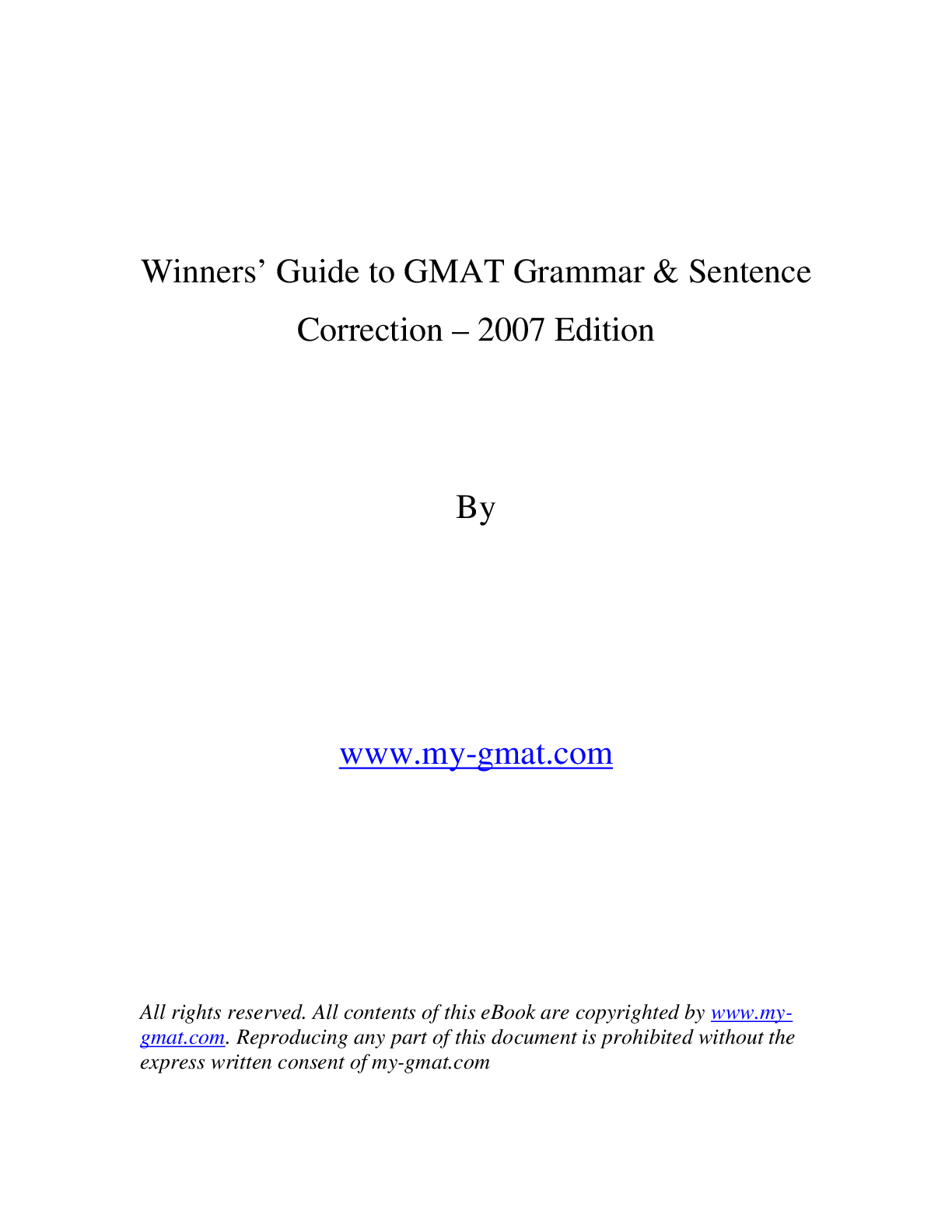
Reviews( 0 )
Document information
Connected school, study & course
About the document
Uploaded On
Jun 01, 2021
Number of pages
177
Written in
Additional information
This document has been written for:
Uploaded
Jun 01, 2021
Downloads
0
Views
42


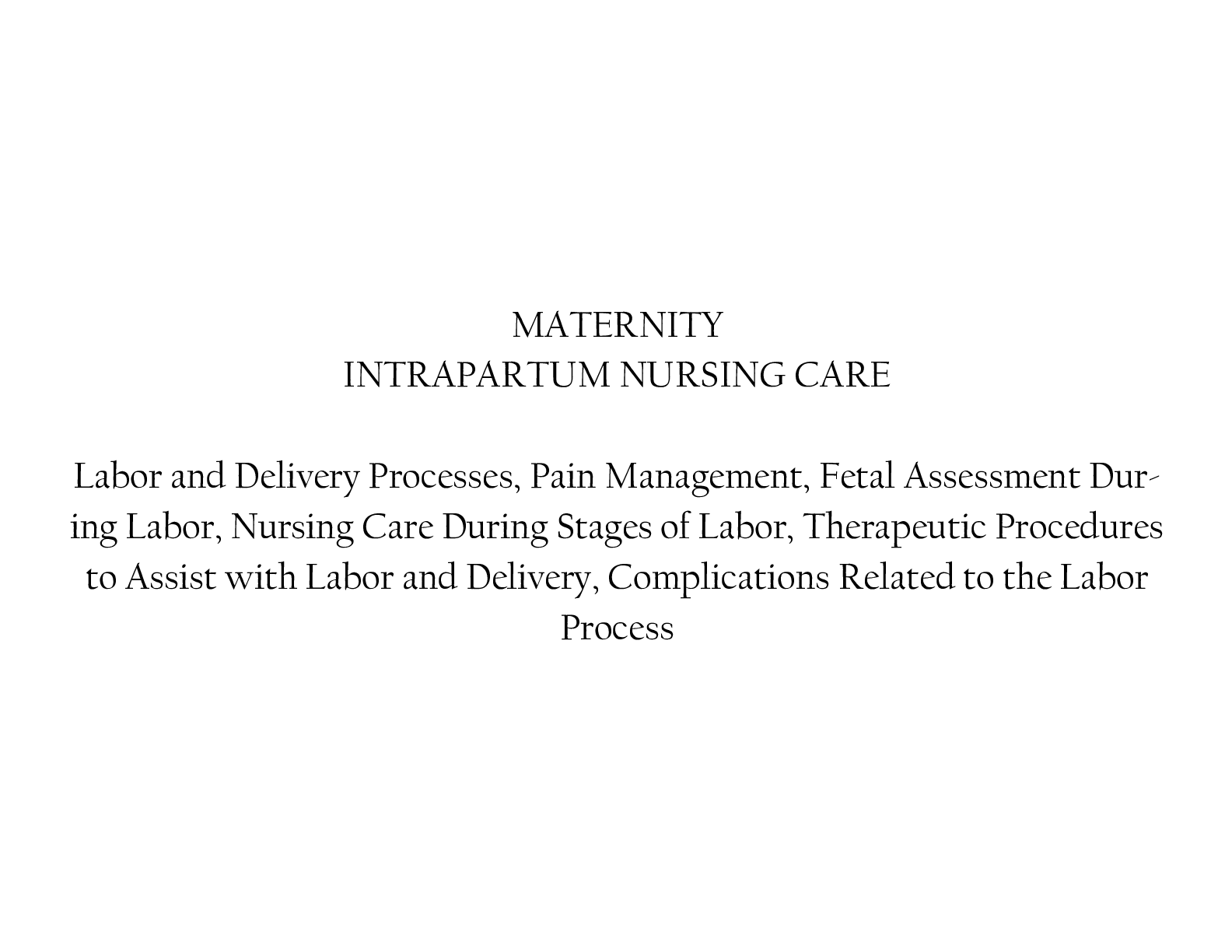

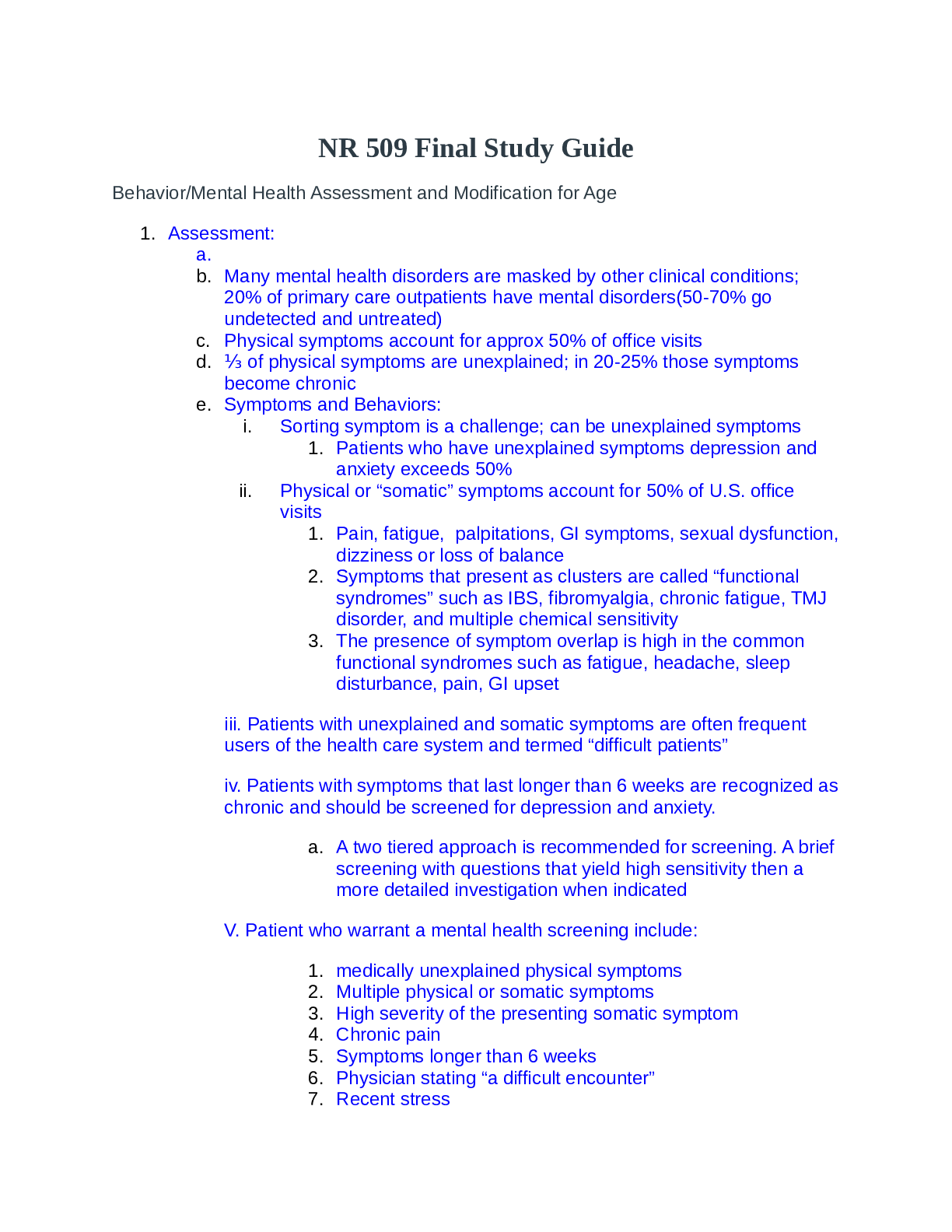
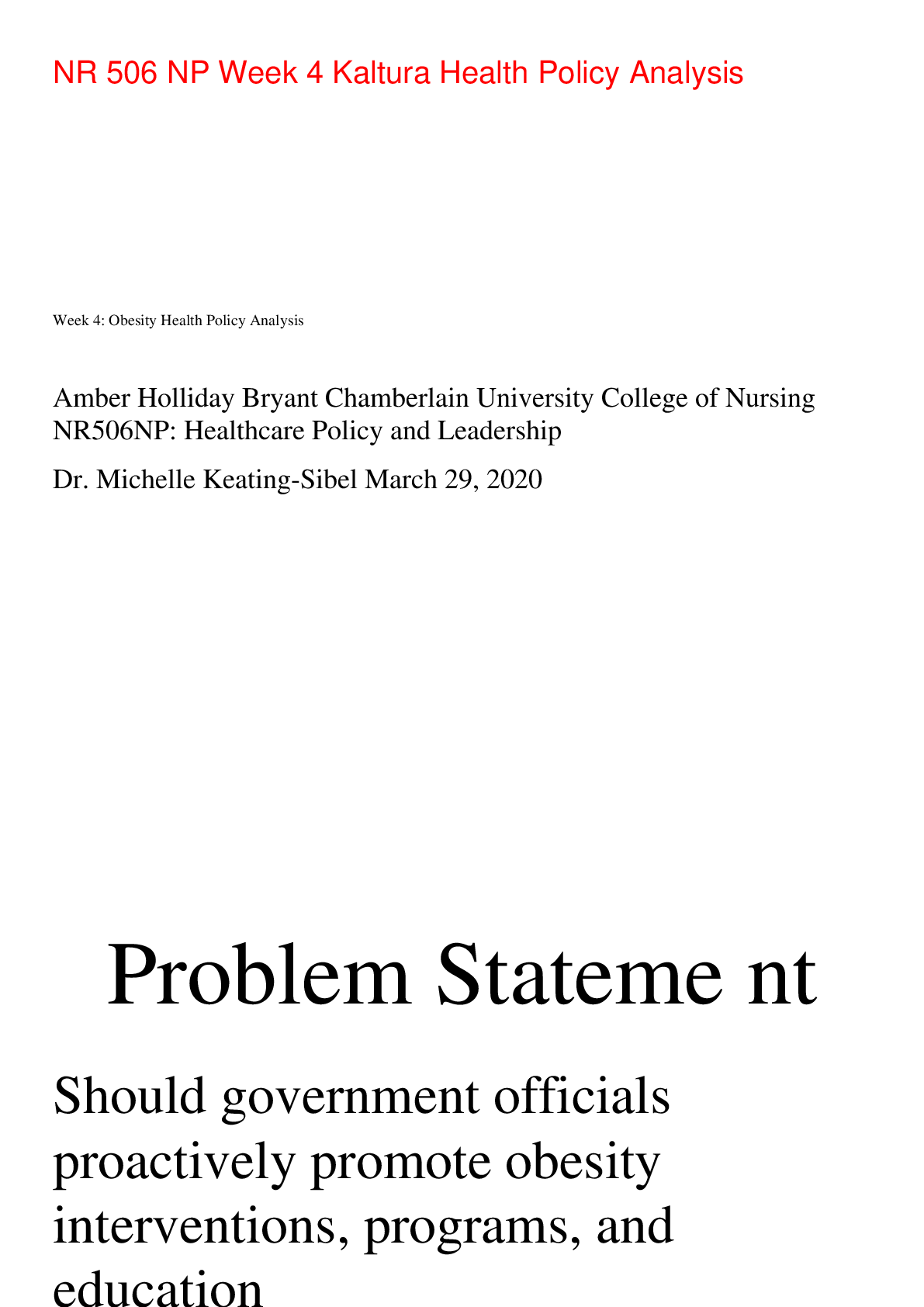
.png)
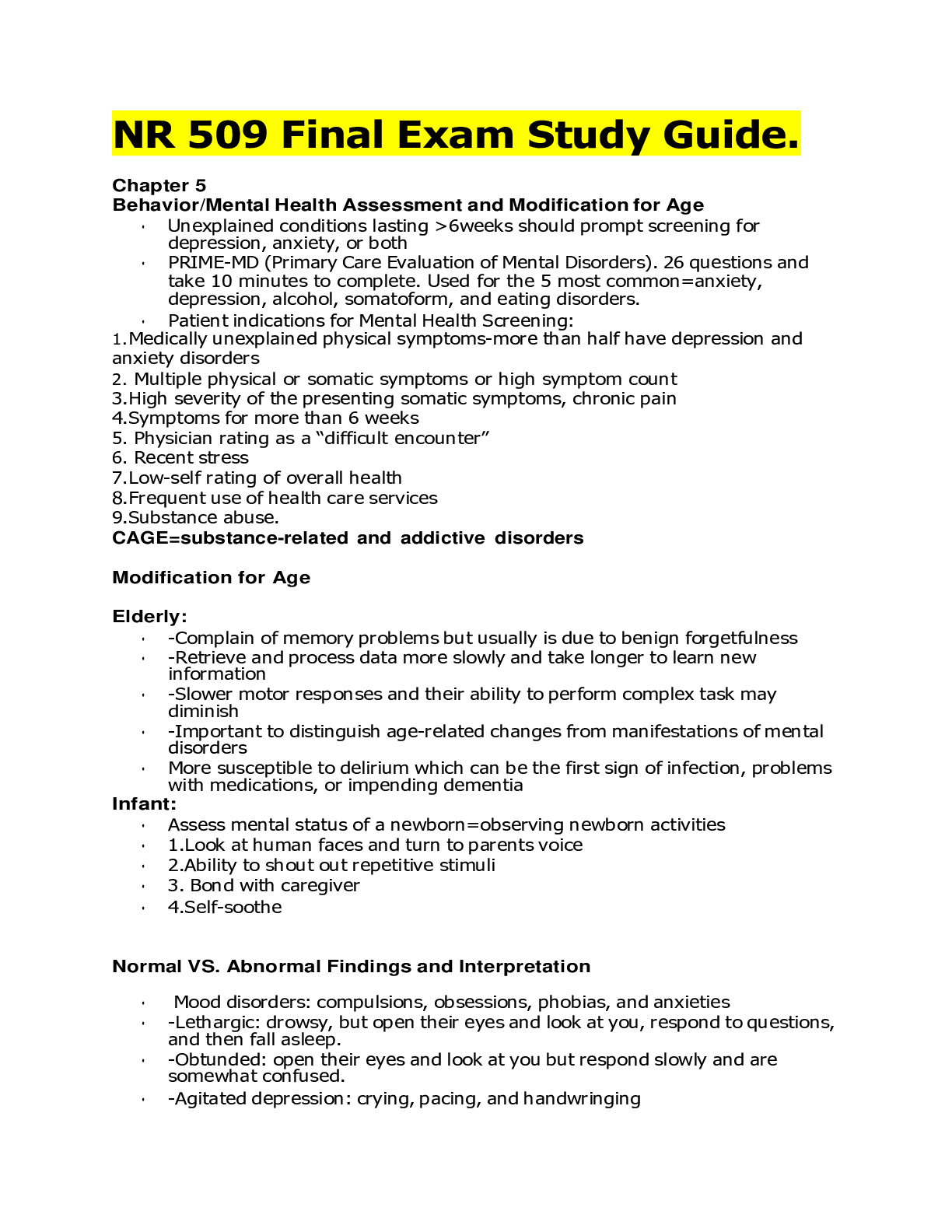
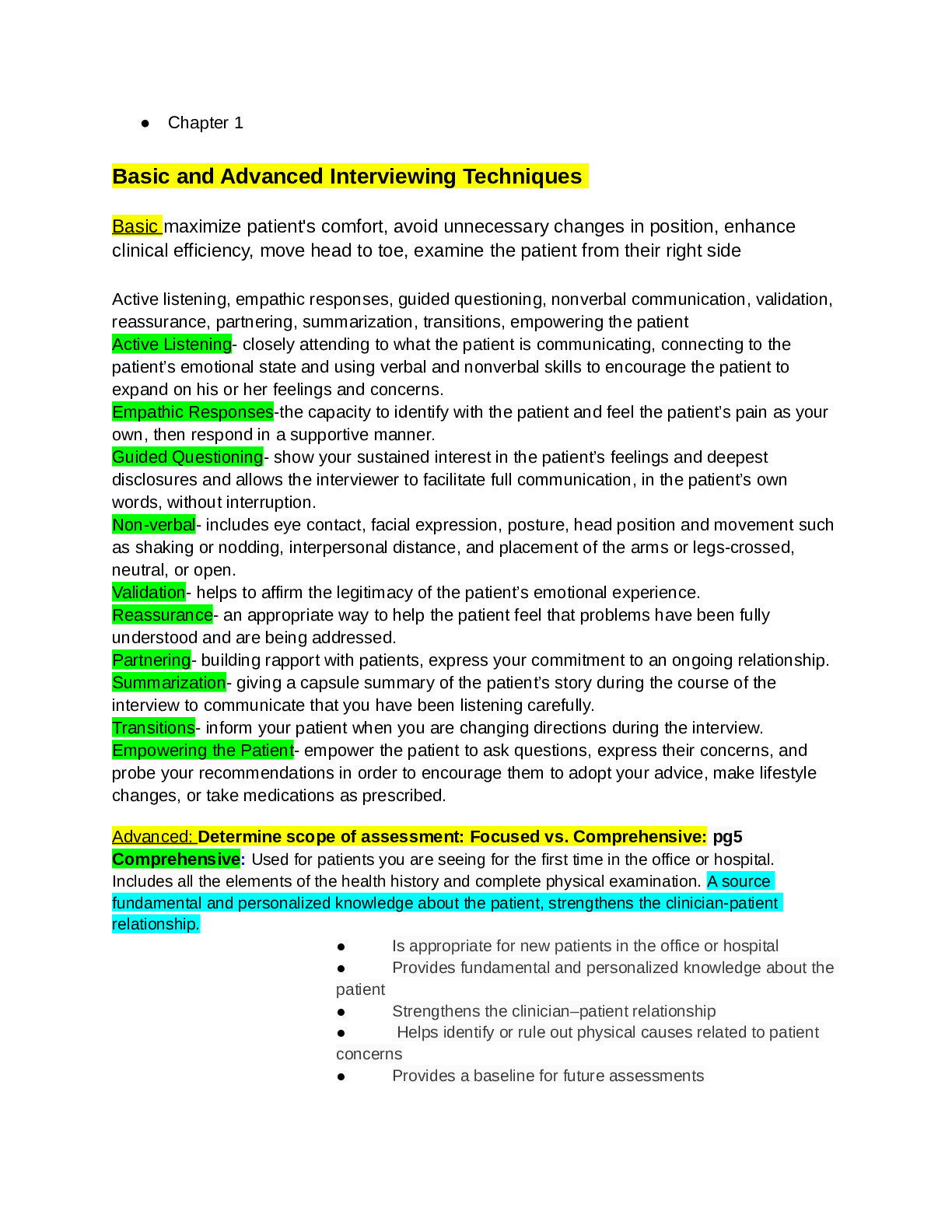



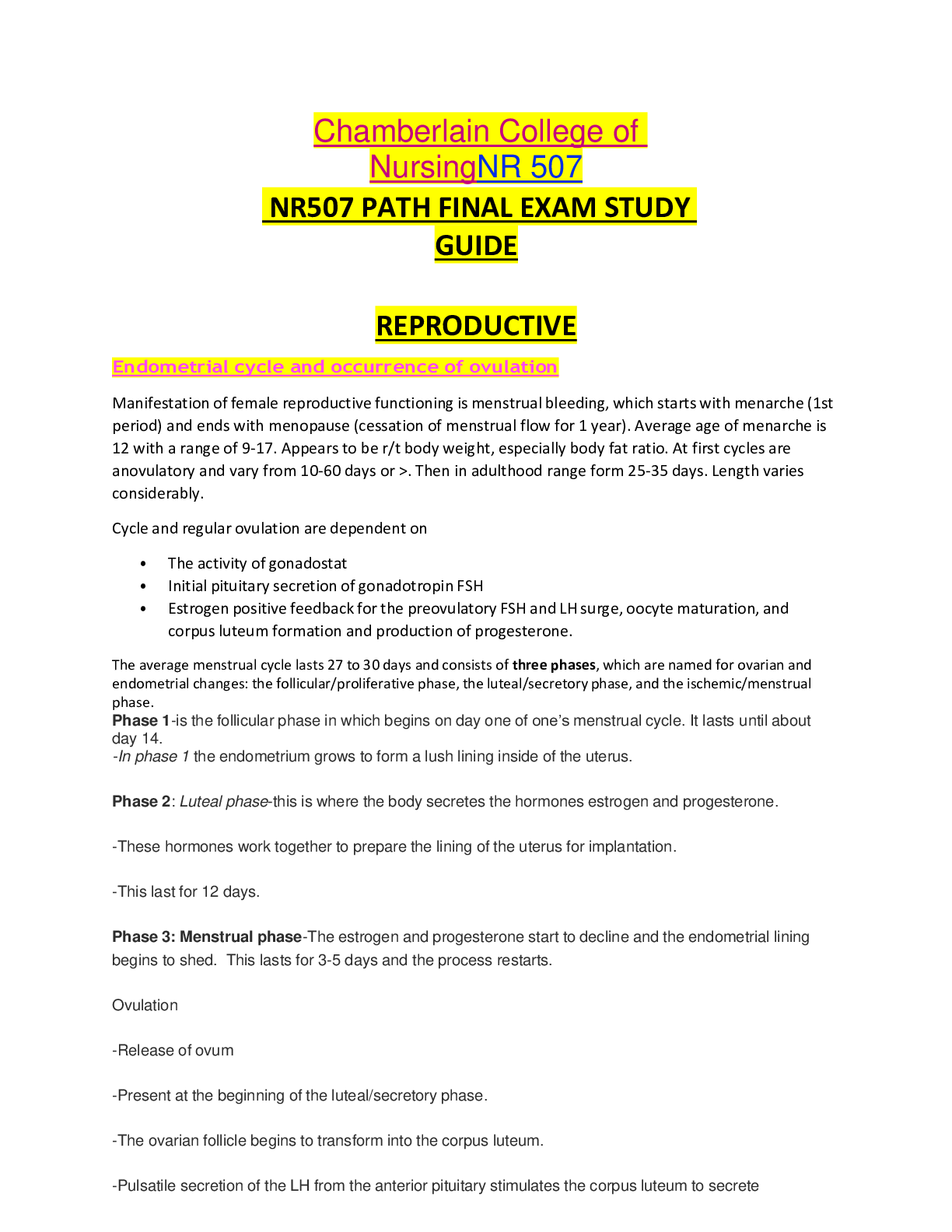
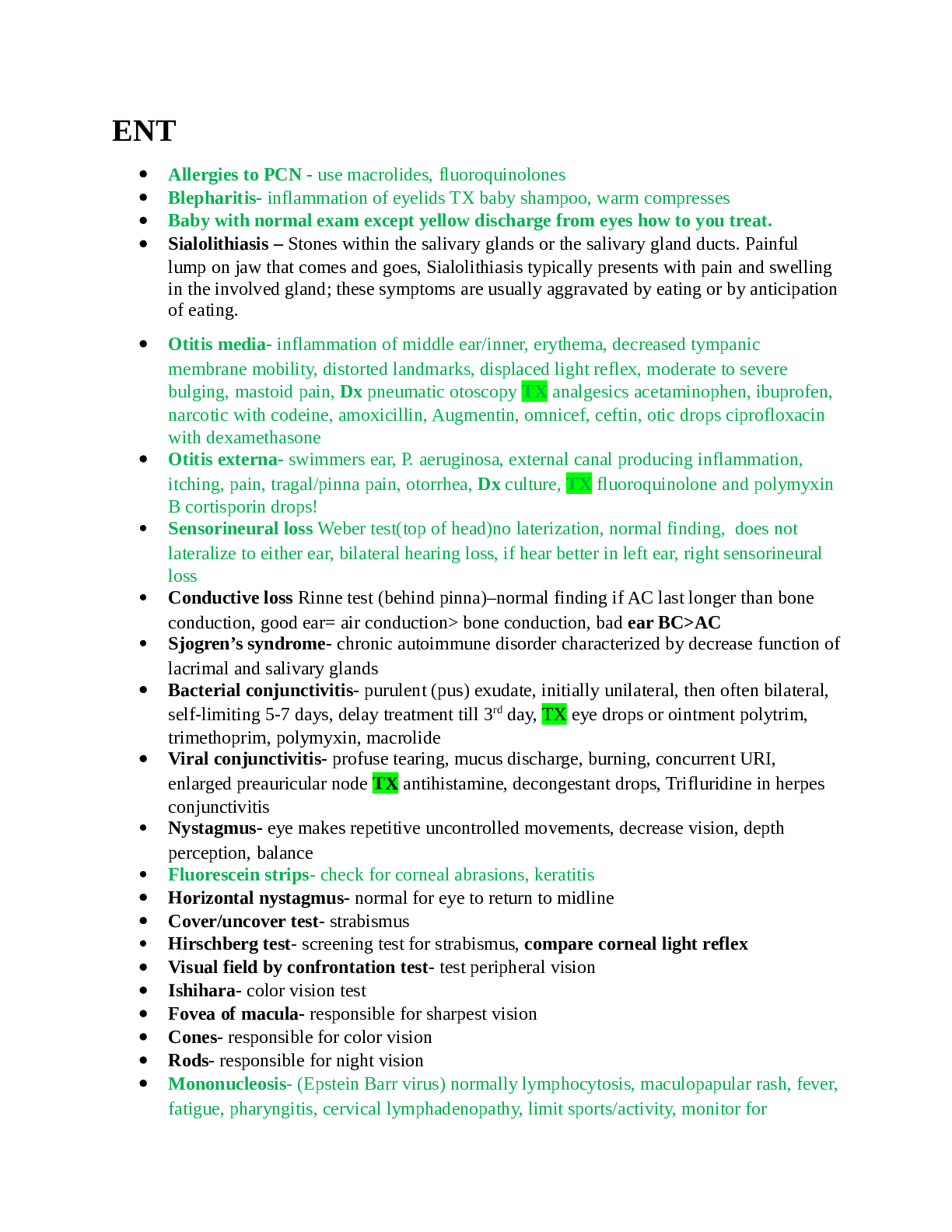


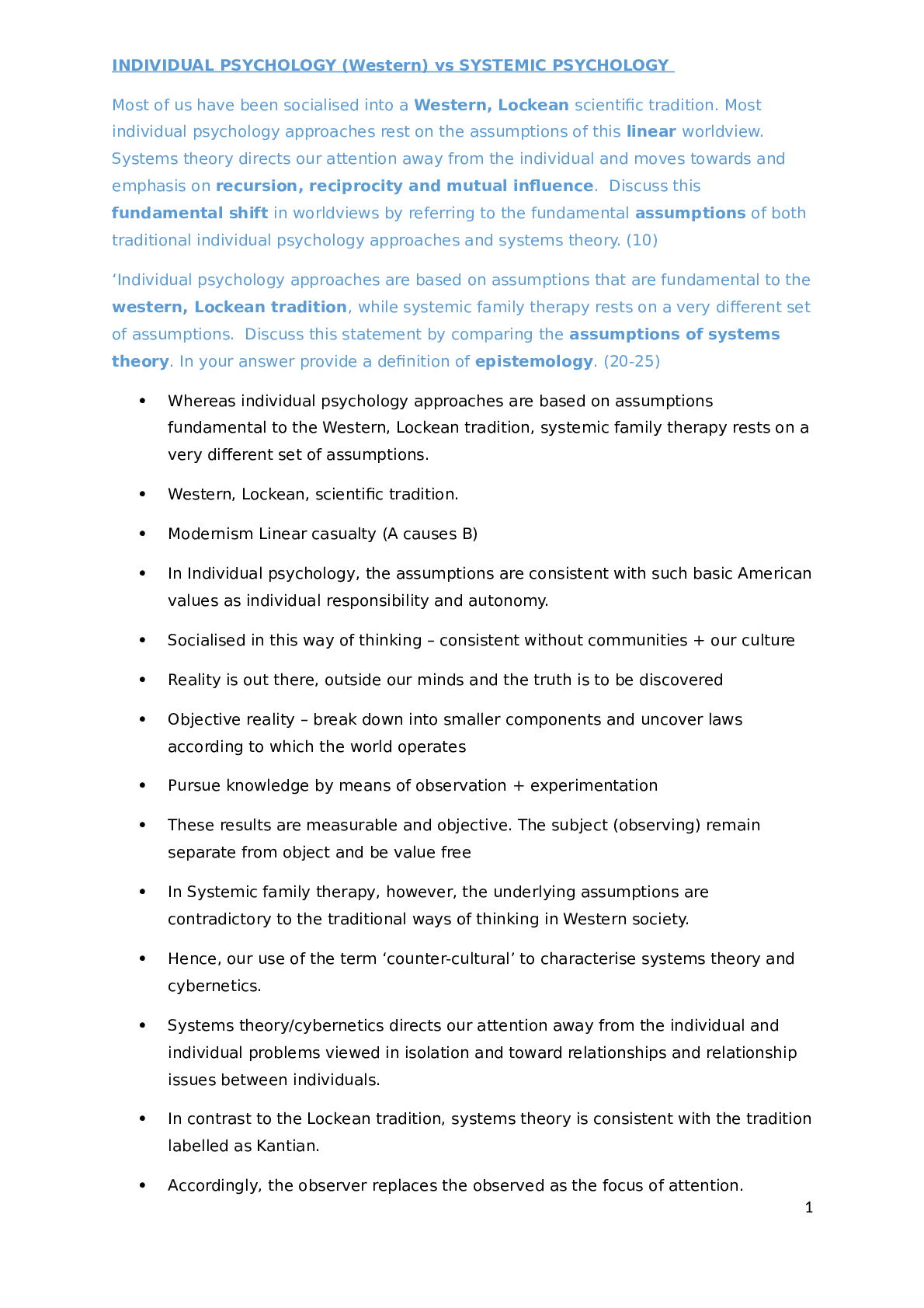





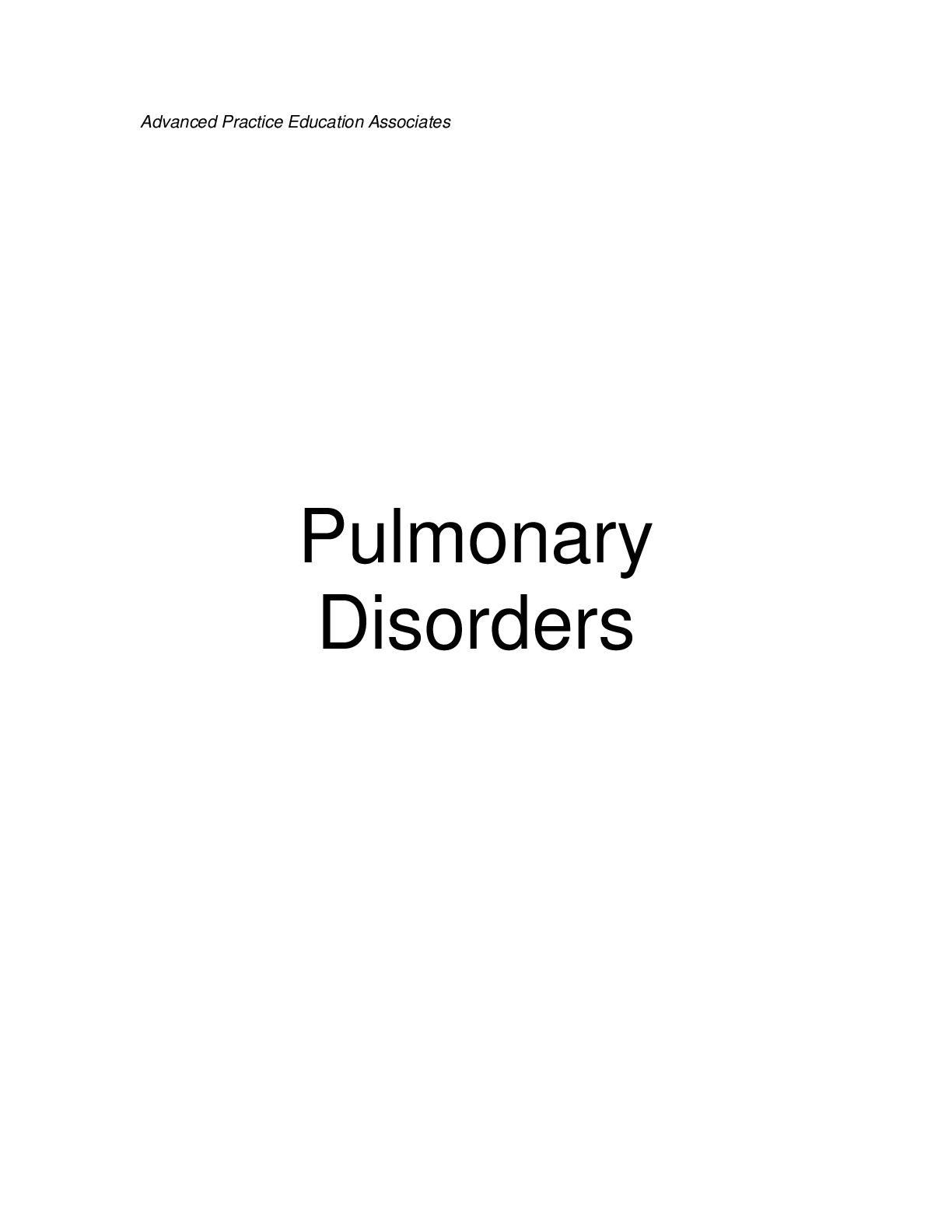
.png)





